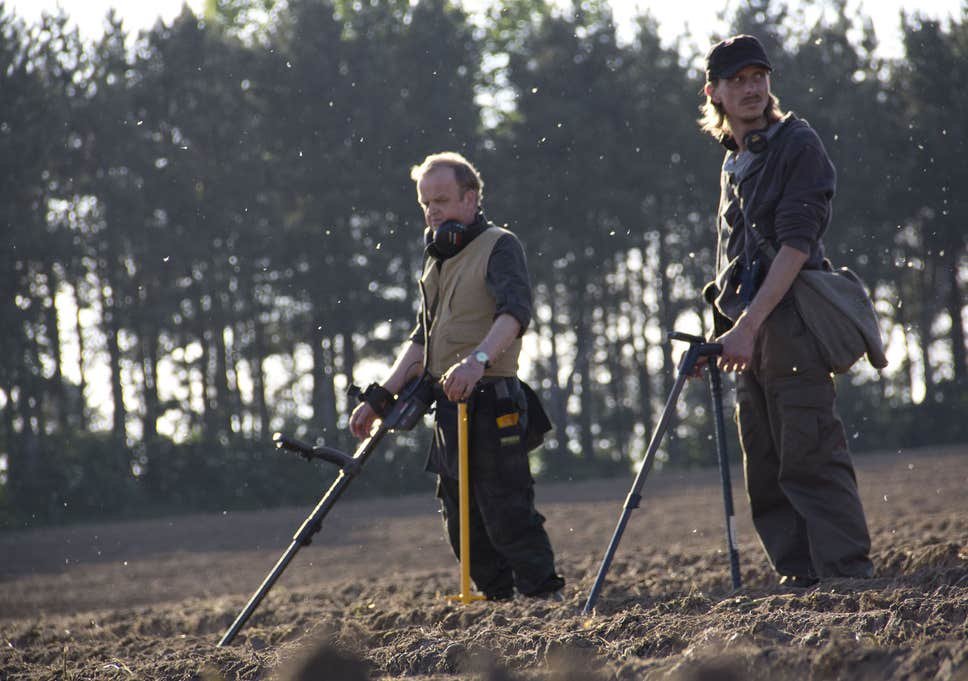The Best Sites For Metal Detecting In Scotland
Scotland has recently been awarded the title of the most beautiful country in the world (given by Argyll Holidays). Full of rich history and an array of coastlines offering stunning views, this timeless place offers some of the best sites for metal detecting. Due to the increase of high profile finds in the past decade, there has been a flood of detectorists visiting Scotland.
For those of you who are beginners when it comes to metal detecting, Scotland is a great place to start for a various amount of reasons as you will discover in this article.

What Are The Laws For In Scotland?
Unlike in England, Wales and Ireland, Scotland offers more public access to its array of beaches, a blessing to any metal detecting enthusiast. However, there are still laws in place in certain areas.
Before detecting in any place you have to have permission granted from the current landowner, even if this is just the local council. However, if the site is a known Scheduled Monument then you have to get special permission from Historic Environment Scotland. If you do not then there are specific penalties in place.
Do I Have To Report My Finds?
Yes, anything that you find that can be called ownerless or of archaeological / historical significance needs to be reported to a museum (local or otherwise) or to the Treasure Trove Unit.
If you wish to remove your finds from Scotland then you need consent from this organisation i.e if you wish to transport your finds.

Where Should I Go?
Before you start hunting and digging up, you should first run over the basics of metal detecting as this may be a new area for you and maybe will require new equipment or accessories.
Here is an article proving tips and trick when it comes to any types of metal detecting.
Seeing as the whole of Scotland is full of rich history including invasions, battles and its own monarchy, there are many places with valuable items just waiting to be found.
In recent years, Galloway, Dumfries and Kirkcudbright have become popular metal detecting areas due to the rare tenth century Viking artefact collection that was discovered there in 2014. The finder and landowner sharing a £1.98 million reward.
Other reportedly popular areas include historical sites such as:
- Culloden Battlefield
- Inveraray Castle
- Lock Lomond Oakwoods
- Abernethy Forest
- Cairngorms National Park
You will need explicit permission to hunt in all of these areas due to their popularity and ownership. However, as they are so popular for metal detecting groups then you will find that permission is easily granted.

The Best Beaches For Metal Detecting In Scotland
If you wish to go beach hunting in Scotland, then you will not need permission from any authority. This is why thousands of novices visit these sites, for both ease and enjoyment.
However, we do advise that you find out if there are any scheduled monument of buried power cables as these could cause problems for you.
This information is easy to find out, all you have to do is visit the local police station. They will be able to give you a rundown of the local laws regarding the hobby and if there is anything else you need to be aware of.
Keeping all of that in mind, here are five of the best and most popular beaches to metal detect at due to the amount of high profile finds:
- Aberdeen Beach – Aberdeen
- West Sands Beach – St Andrews
- Tolsta Beach – Isle of Lewis
- East Beach – Lossiemouth – Moray
- Coldingham Bay – Eyemouth

Gold Hunting In Scotland
As you may be aware, gold is typically found in gravels and sands which act as a natural producer of the precious metal. For this reason, people are able to go gold hunting with just a decent metal detector and a shovel.
In terms of legal business, objects found in Scotland do not have to be made of precious metal in order to be reported to the Treasure Trove. However, all objects found made of gold / must be reported.
Gold has been found and continued to be found in many places in Scotland. In fact, in 2018 the biggest gold nugget ever found in the UK was discovered in a Scottish river.
While there are many places to go gold hunting, these places are especially rich due to the historic gold panning settlements. Places such as:
- Lowther Hills
- Leadhills
- Wanlockhead
Wanlockhead is the most popular location of the trio due to its history of gold. The first documented evidence of gold found in the area dates back to King James IV back in the 16th century. There is something about its natural materials that make is a gold mine, literally.

To Conclude
Overall, there are many reasons and many places to visit Scotland as a treasure hunter. Whether you prefer prospering for gold or have a tendency to hunt for historical items, there is sure to be a place for you. And really, there couldn’t be a more beautifully fulfilling place to do this particular hobby.
Thanks for the info it is very well appreciated.
I was wondering if I needed permission to detect in rivers in scotland as there was no mention to this area in your post
Kind regards
Stephen Trotter
I was wondering if you knew about wether I can use my detector around Loch Lomond beaches and surrounding parkland.
Thanks I’m advance
Unfortunately Inveraray castle (which is very local to me) will not let you detect on any of their grounds, I already emailed them and got a definite NO! Which is a huge shame as I think there would be some interesting funds there.